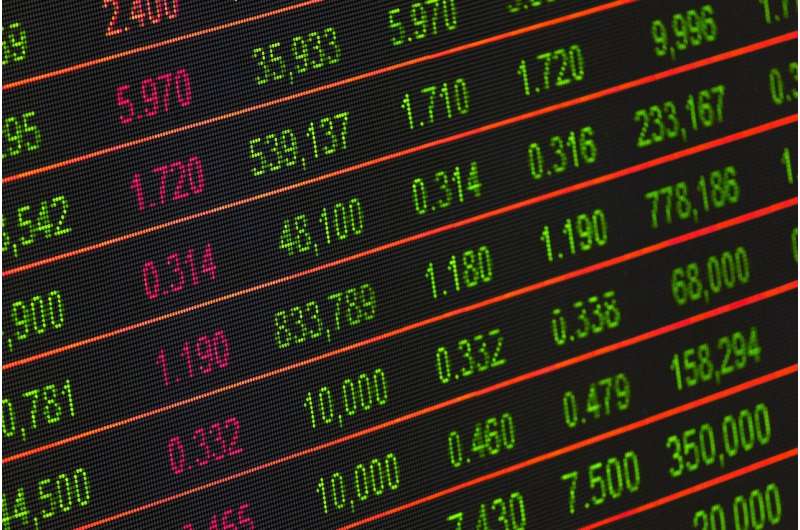Firms employing many scientists and engineers are riskier for investors

A highly skilled workforce of scientists and engineers may boost companies' performance but makes them a riskier investment on the stock market, research shows.
This was because firms with high numbers of scientists and engineers are more inflexible, as they are expensive to employ but too important to sack, the British Academy of Management online annual conference heard today.
Three researchers from Leeds University Business School analyzed data from 1997 to 2018 on 14,786 firms in 16 countries, including the UK, that were listed on the stock market.
Dr. Chieh Lin, Professor Steven Toms and Professor Iain Clacher looked at the wage share—the percentage of the total wage bill—spent on staff working in science, technology, engineers or mathematics, known as STEM workers, in 269 industries, such as transport, manufacturing and education.
They found that in those industries where companies spent more of their wage bill on STEM workers, the stock market value of firms was more volatile.
Firms' "Beta measure" grew in industries where more STEM workers were employed. Beta is a measure of a stock's volatility in relation to the overall market, where a stock that swings more than the market over time has a beta of more than 1.0.
On average, an extra 20% of wage bill spent on STEM workers was linked to an increase in beta by between 9% and 17%.
Also, firms' profits became more sensitive to changes in their sales income as the firm relied more heavily on STEM workers. Because of this uncertainty, investors in the firms demanded a higher return.
STEM workers cost more but are often too important to lay off, making firms unresponsive to downturns. An average STEM worker earns $91,000, compared with $47,000 for non-STEM staff. STEM workers account for around 13% of total workforce and 23% of total wages and salaries in the US.
"STEM workers are at the center of the global competition for talent due to their ability to leverage advanced technology both effectively and productively," Dr. Lin told the conference.
"While the contribution of STEM workers to high value-added activities such as R&D and innovation, and therefore growth, is typically emphasized, limited attention has been paid to the risk that a STEM-intensive workforce may entail for individual firms.
"We argue that reliance on STEM workers reduces the operating flexibility of firms by increasing the degree of fixity in labor costs, and therefore total operating costs.
"The operating leverage thus created increases the volatility of cash flow as it becomes more exposed to systematic risk. The risk associated with the employment of STEM workers must be balanced against their contribution to innovation and growth.
"Investment in STEM workers amplifies both the downside risk and upside potential of firms, but with the former effect being more dominant.
"The stocks of STEM worker-intensive firms are riskier due to higher exposure to systematic risk. Investors demand a high return on stocks of STEM worker-intensive firms to compensate for a higher exposure to systematic risk."
Dr. Lin said that while stocks of STEM-intensive firms are risky investments in general, exceptions such as Amazon and other tech giants were possible given their robust business models.
The researchers controlled for the effects of several factors such as firm size, indebtedness and growth, in order to study the effect of STEM employment in isolation.
No comments:
Post a Comment